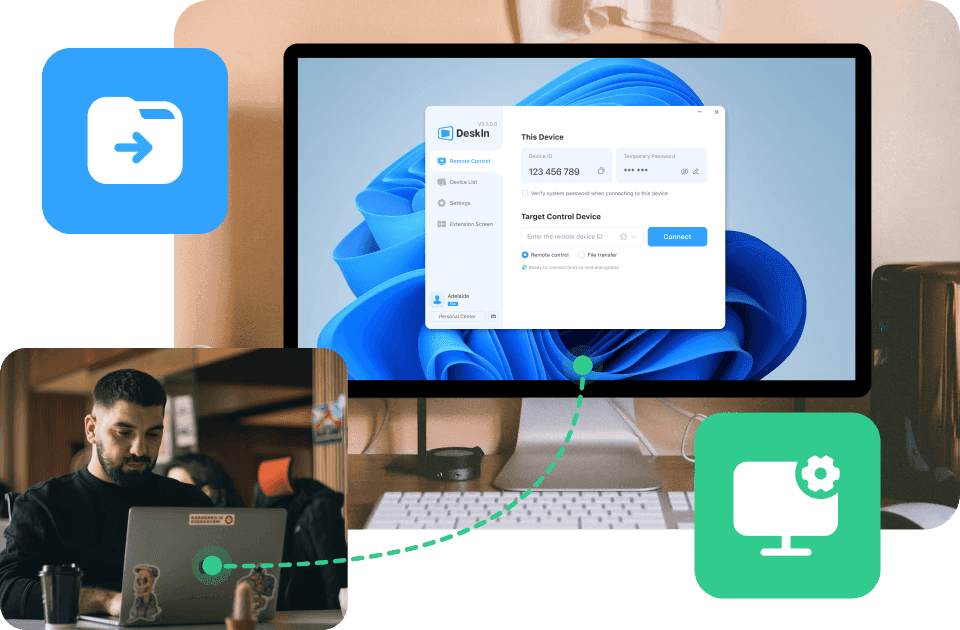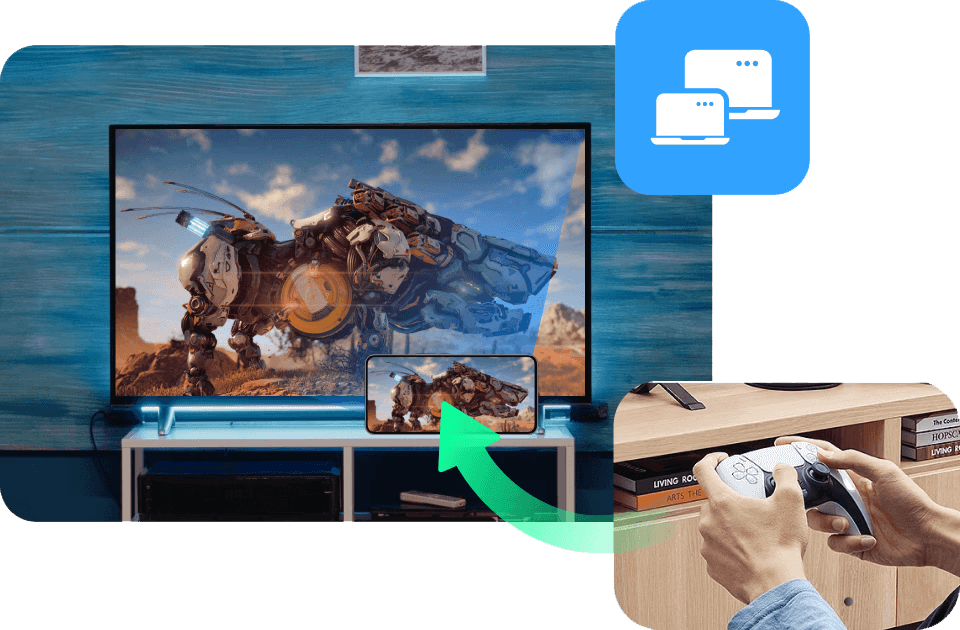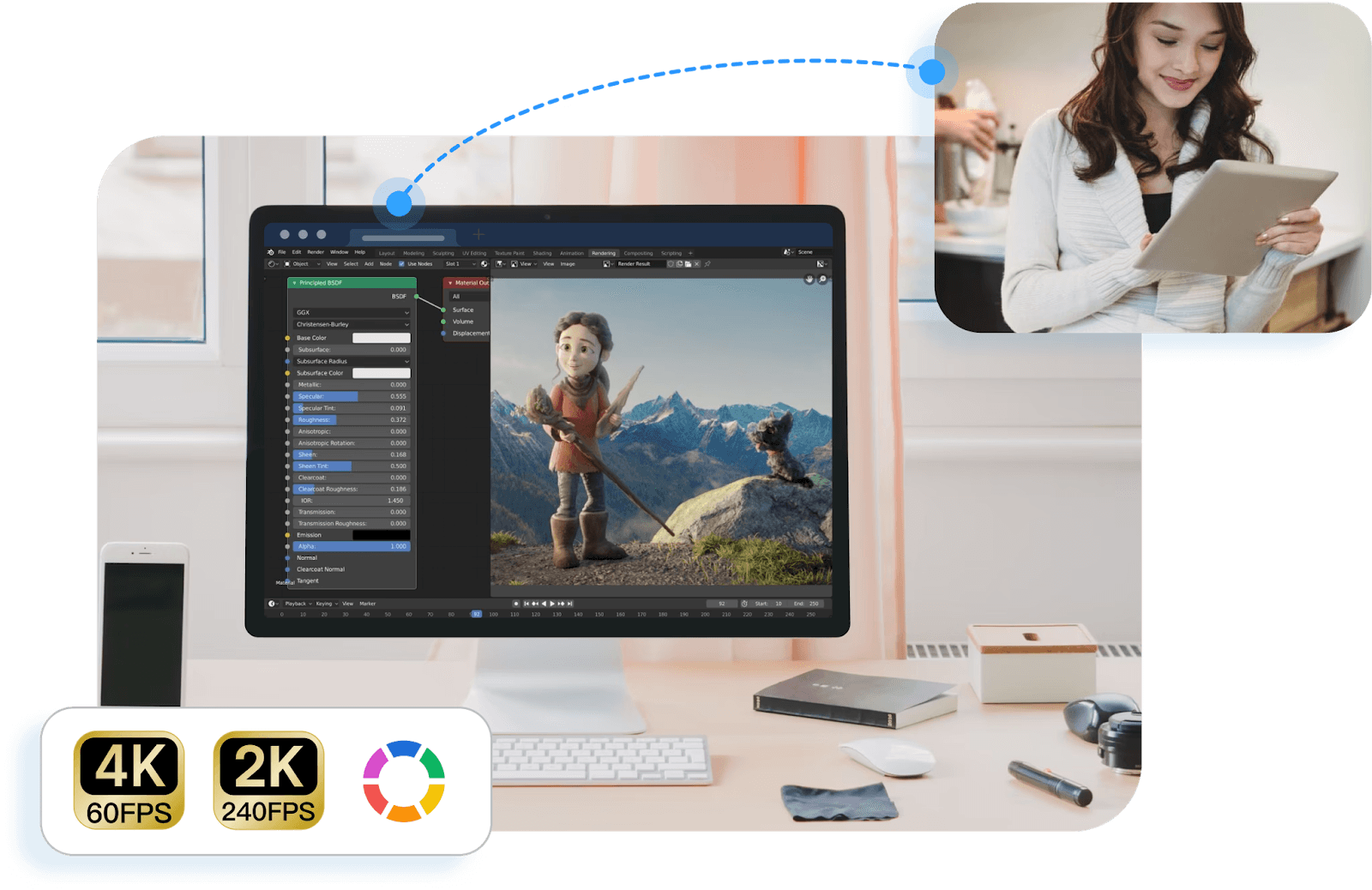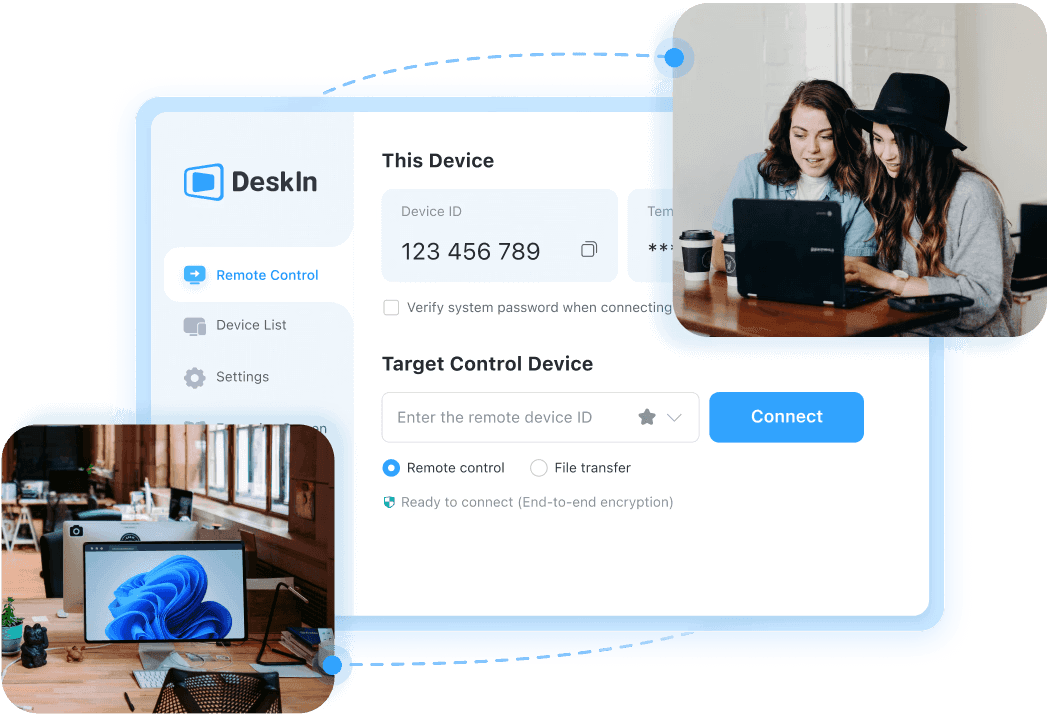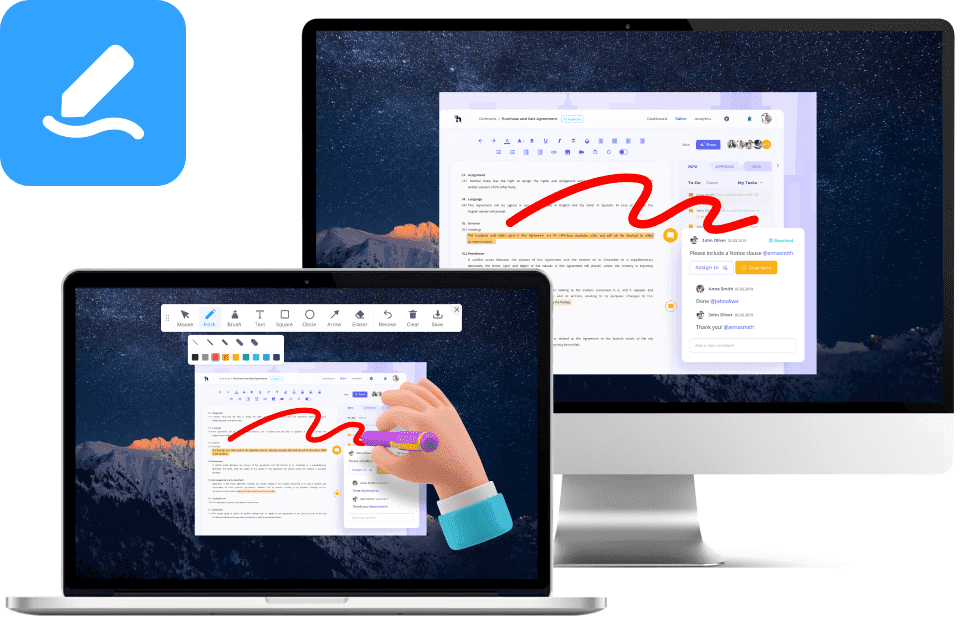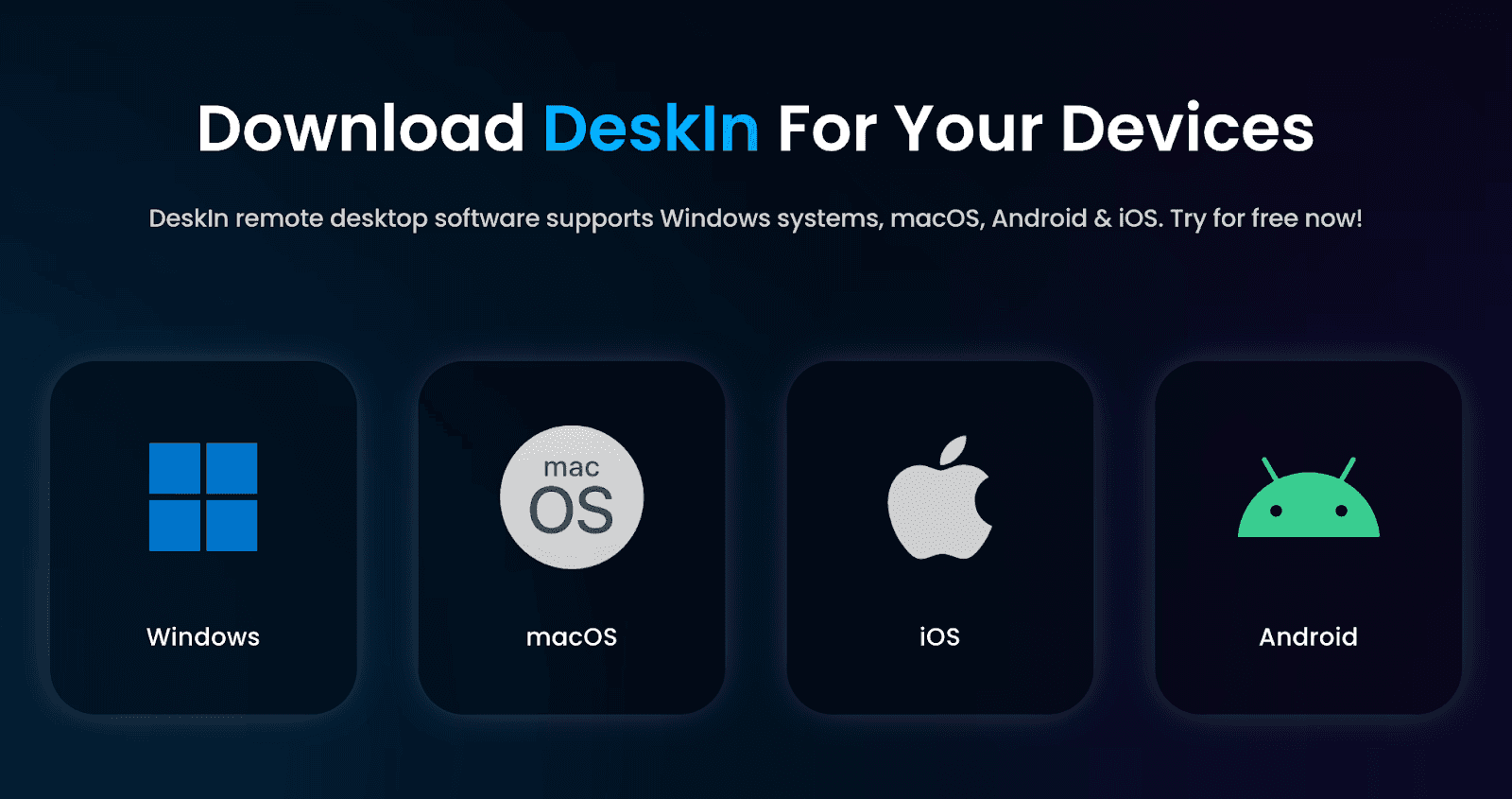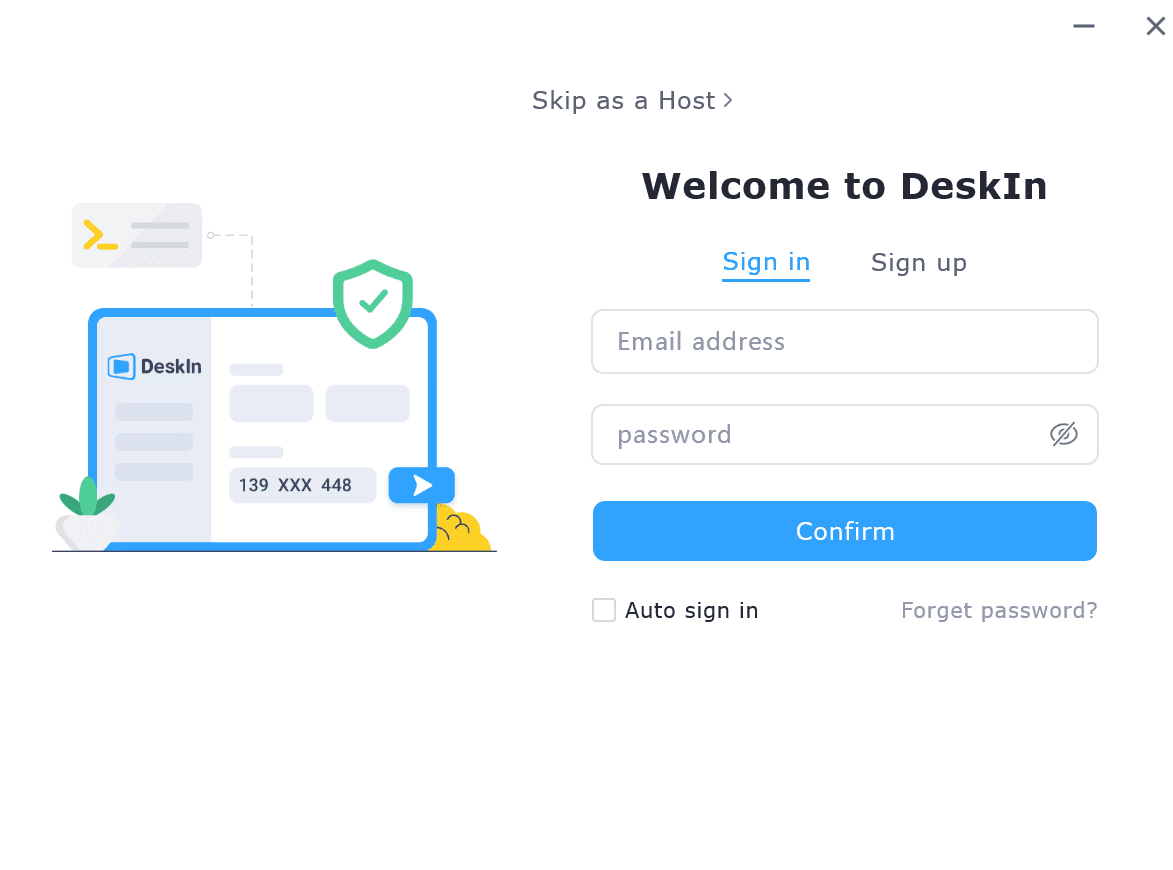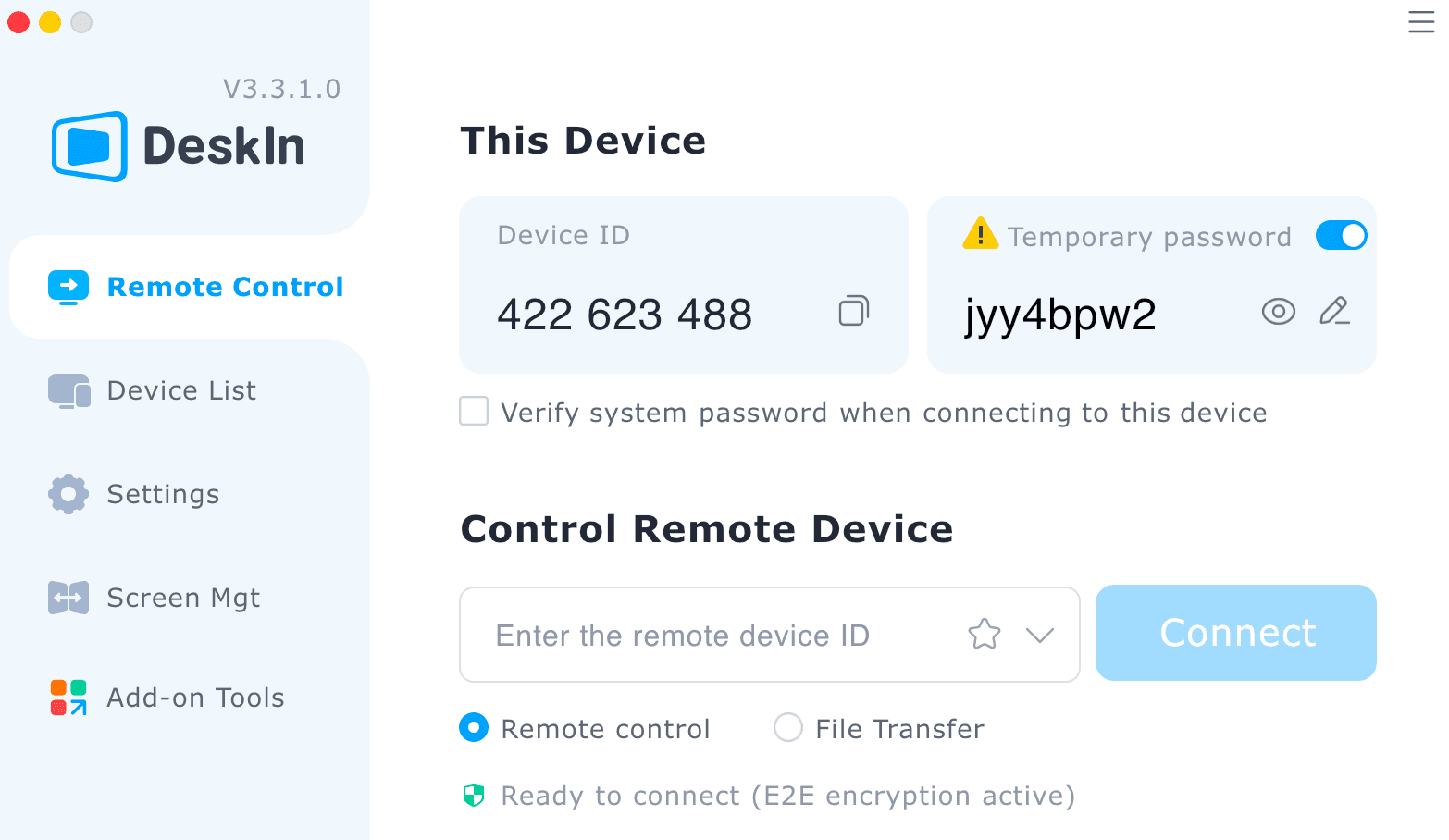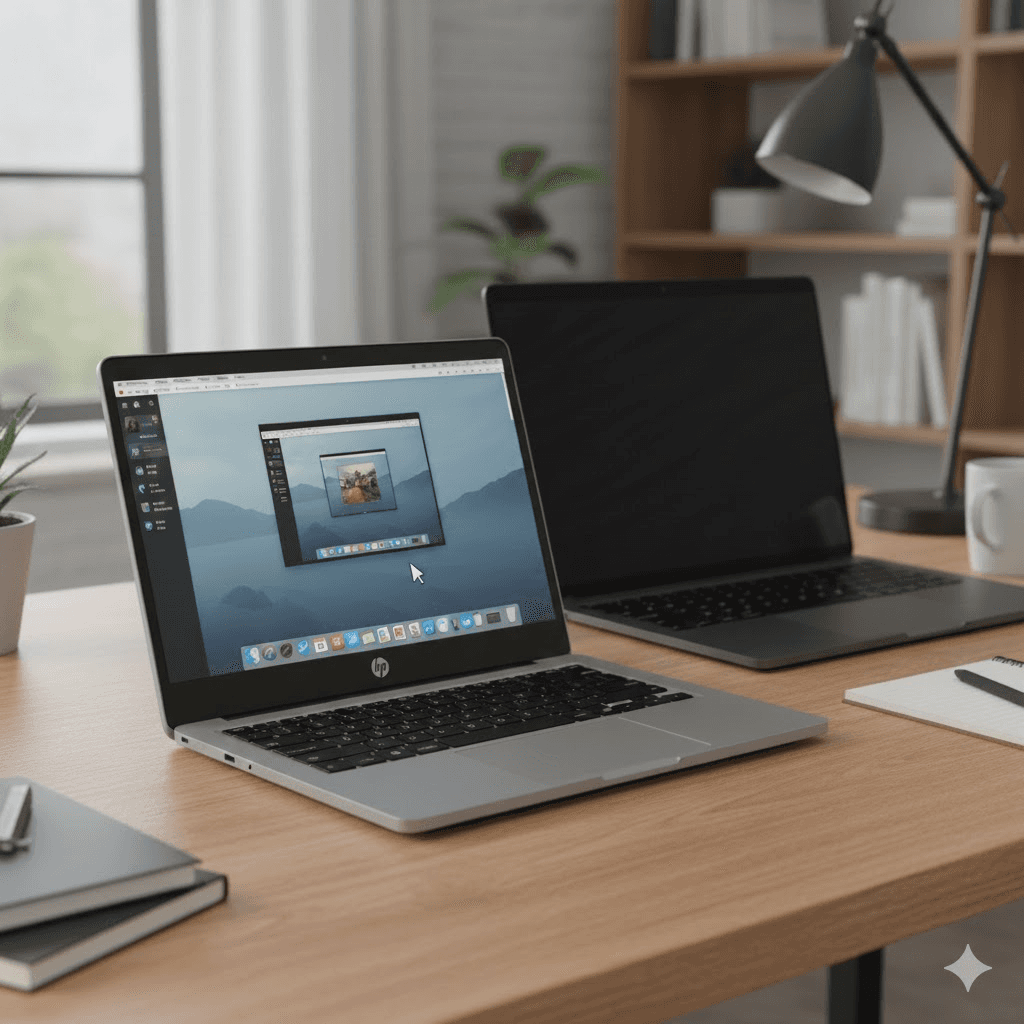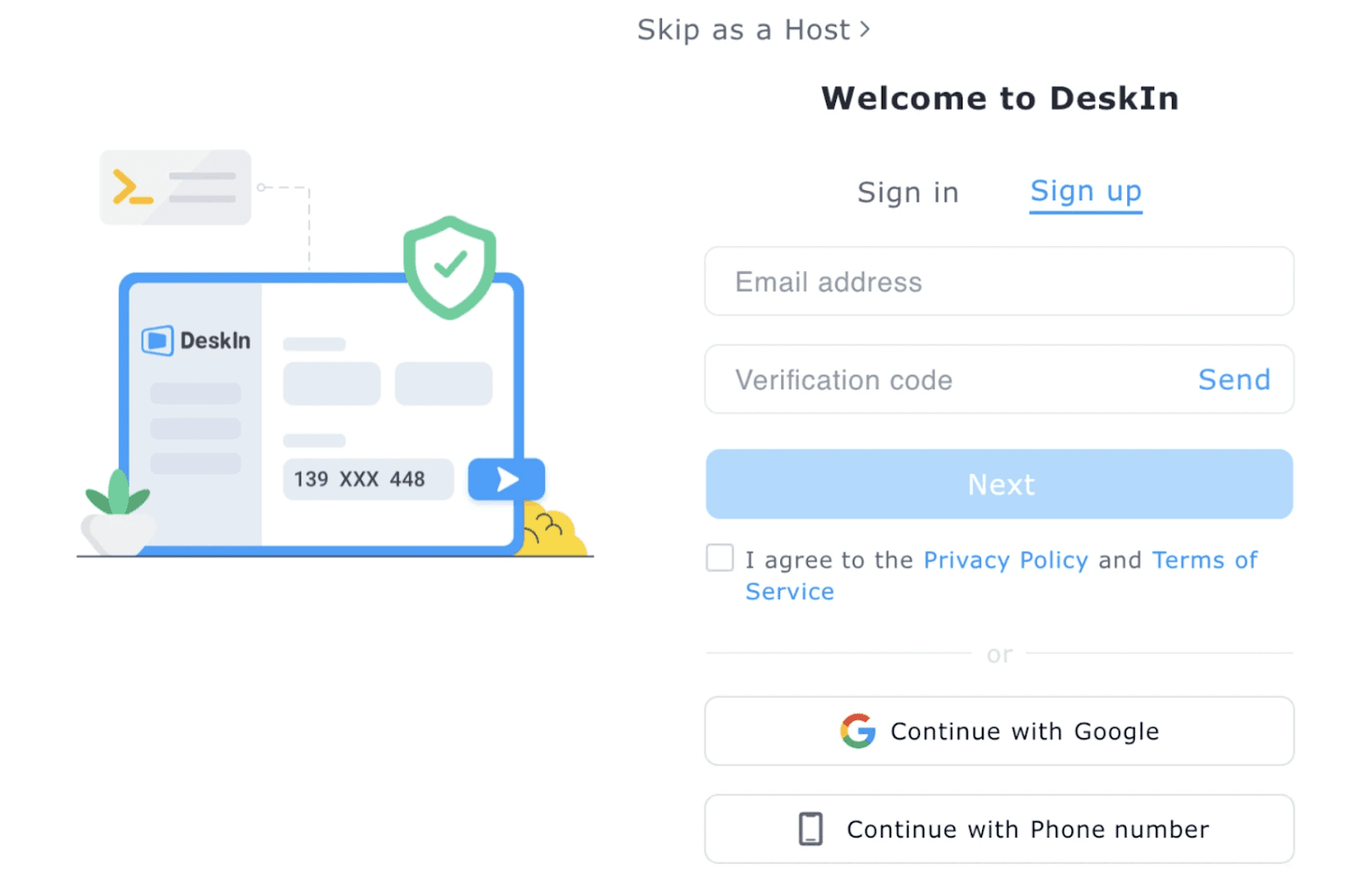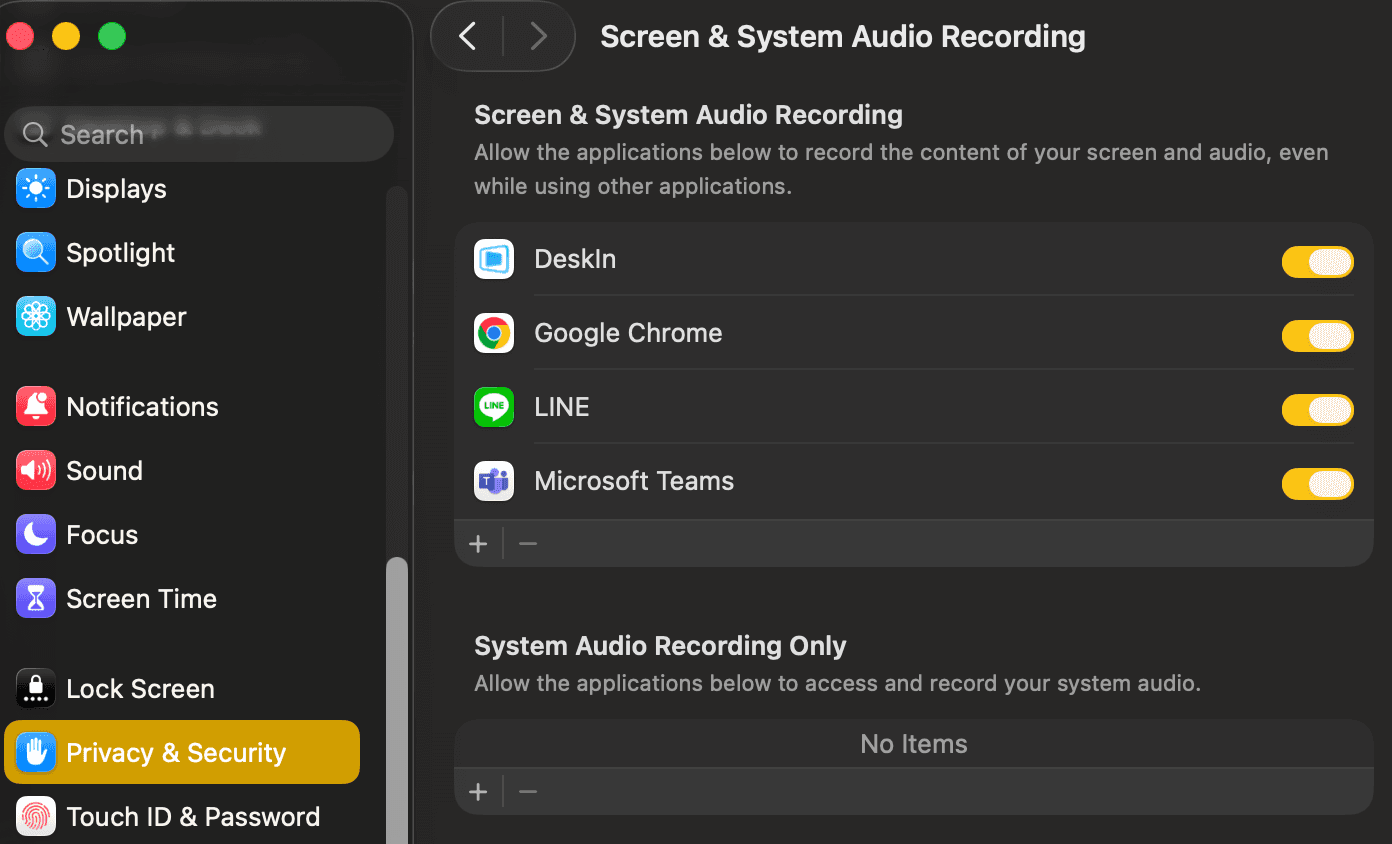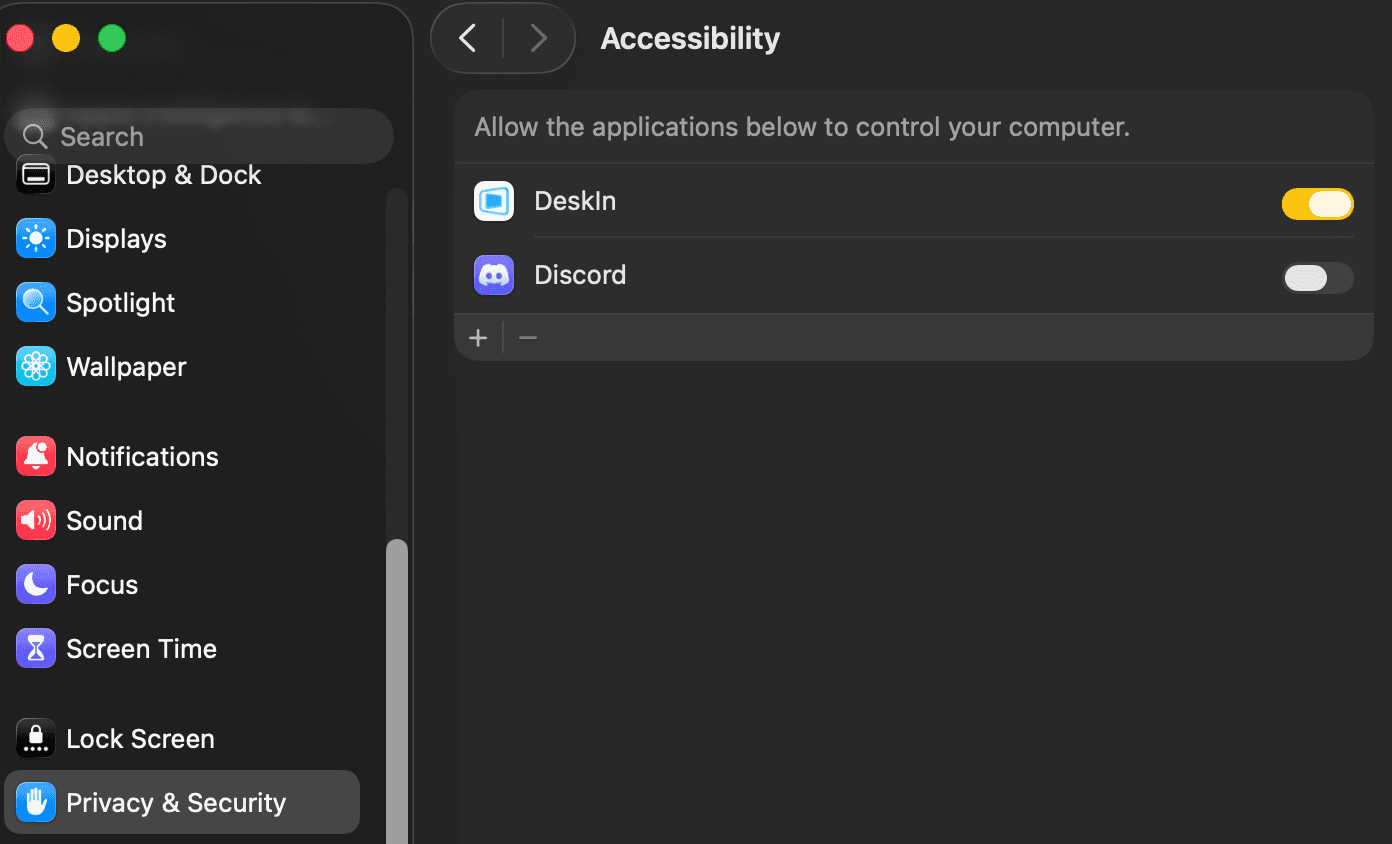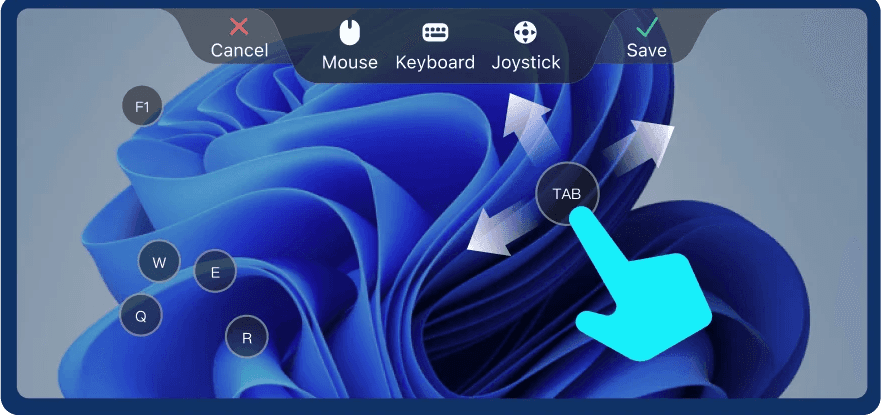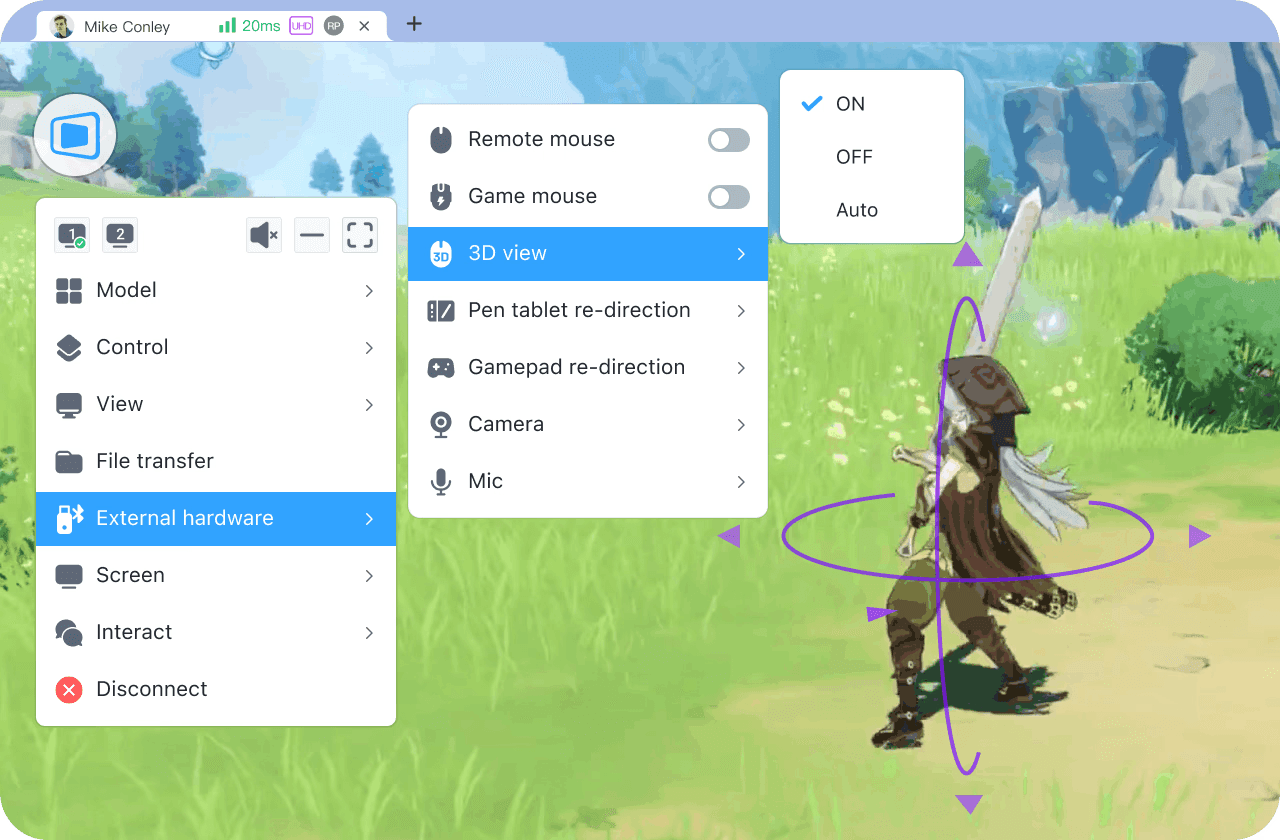Bạn đã bao giờ nhìn chằm chằm vào Mac của mình, mơ ước được lao vào Valorant hoặc Overwatch, chỉ để va chạm với rào cản “chỉ có Windows”? Tôi đã cảm thấy sự thất vọng đó. Là một game thủ, tôi muốn những tựa game hoành tráng mà không cần phải mua một chiếc PC mới. Đó là lúc DeskIn xuất hiện, cho phép bạn chơi các trò chơi Windows trên Mac một cách dễ dàng. Đối với những game thủ từ xa, các fan console hoặc những người yêu thích PC, đây là một bước ngoặt. Với các cộng đồng game toàn cầu đang sôi động, đặc biệt là xung quanh tiếng tăm của Valorant, DeskIn cung cấp một cách để tham gia vào hành động trên Mac của bạn.
Bài viết này chia sẻ cách chơi các trò chơi Windows trên Mac, bao gồm những tựa game hot như Valorant. Tôi sẽ phân tích quy trình, đưa vào những mẹo thực tế và cho thấy cách DeskIn giúp chơi game mượt mà. Hãy chuẩn bị Mac của bạn cho hành động nào!
Tại sao game thủ Mac cần các trò chơi Windows
Mac thì thanh lịch và mạnh mẽ, nhưng nhiều trò chơi ăn khách, như Valorant và Overwatch, chỉ có trên Windows. Một khảo sát năm 2023 cho thấy 60% game thủ mong muốn có quyền truy cập đa nền tảng để chơi các trò chơi Windows trên Mac. DeskIn đã lấp đầy khoảng trống này, phát trực tuyến các trò chơi từ một chiếc PC Windows đến Mac của bạn với độ trễ cực thấp (≤40ms) và hình ảnh 4K. Không cần phải khởi động đôi hoặc mua phần cứng mới—chỉ cần niềm vui chơi game thuần túy.
Câu chuyện: Hãy tưởng tượng bạn rất phấn khích với việc phát hành Valorant vào năm 2026. MacBook của bạn đã sẵn sàng, nhưng trò chơi chỉ có trên Windows. DeskIn cho phép bạn phát trực tuyến từ PC từ xa, giữ cho bạn ở Los Santos mà không gặp rắc rối.
Thách thức khi chơi các trò chơi Windows trên Mac
Chạy các trò chơi Windows trên Mac không phải lúc nào cũng suôn sẻ. Các vấn đề tương thích, như thiếu hỗ trợ DirectX hoặc hạn chế của macOS, có thể dừng bạn lại. DeskIn tránh những vấn đề này bằng cách phát trực tuyến các trò chơi từ một máy Windows đến Mac của bạn, vượt qua giới hạn phần cứng địa phương.
Các rào cản phần mềm: Mac không hỗ trợ natively các API chỉ có trên Windows.
Độ trễ hiệu suất: Các trình giả lập có thể làm chậm gameplay.
Quyền truy cập trò chơi: Thư viện Windows của Steam/Epic thường chặn người dùng Mac.
Thống kê: 45% người dùng Mac cho rằng tính tương thích là nỗi thất vọng lớn nhất khi chơi game.
Trích dẫn: “Các giải pháp phát trực tuyến như DeskIn giúp các trò chơi Windows có thể tiếp cận trên Mac, không có sự thỏa hiệp”, nói Jamie Lee, chuyên gia công nghệ game.
Cách DeskIn giúp chơi game trên Mac đơn giản

Phát trực tuyến với tốc độ và độ rõ nét
DeskIn sử dụng công nghệ máy tính từ xa để cho phép bạn chơi các trò chơi Windows trên Mac. Mã hóa từ đầu đến cuối giữ cho các phiên của bạn được bảo mật, trong khi 4K ở 60 FPS đảm bảo hình ảnh sắc nét. Đây là lý do tại sao nó hoàn hảo cho Valorant trên Mac:
Độ trễ thấp: Thời gian phản hồi ≤40ms giống như chơi game cục bộ.
Chất lượng cao: Màu sắc thật 4:4:4 mang đến đồ họa sống động.
Đa nền tảng: Hoạt động trên macOS, iOS và Android.
Ví dụ: Một người bạn muốn chơi Overwatch trên Mac của họ. Với DeskIn, họ đã phát trực tuyến từ một PC Windows, tận hưởng các trận raid mượt mà mà không bị lag.
Hướng dẫn: Chơi trò chơi như Valorant trên Mac với DeskIn
Tháng trước, tôi đã thử nghiệm DeskIn để phát trực tuyến một trò chơi Windows trên Mac của mình. Kết quả rất mượt mà. Đây là cách bạn có thể chơi các trò chơi Windows trên Mac, như Valorant, sử dụng DeskIn:
Bước 1: Tải DeskIn
Tải nó từ trang web của DeskIn cho macOS, Windows hoặc di động.
Bước 2: Thiết lập một PC Windows
Sử dụng một thiết bị Windows với Steam và trò chơi của bạn (ví dụ, Valorant) được cài đặt để đăng nhập vào DeskIn.

Bước 3: Kết nối với DeskIn
Đăng nhập, ghép nối Mac của bạn với PC bằng một ID thiết bị & Mật khẩu.

Bước 4: Khởi động Steam
Mở Valorant trên PC Windows qua luồng 4K của DeskIn.

Bước 5: Chơi thoải mái
Bạn có thể cá nhân hóa trải nghiệm DeskIn của bạn bằng cách chọn từ nhiều chế độ khác nhau như Chế độ Game hoặc Chế độ Hiệu suất Cao thông qua một menu pop-up xuất hiện khi kết nối thiết bị với PC Windows.

Đừng bỏ lỡ những hướng dẫn này:
Giải pháp thay thế: Sử dụng VirtualBox để cài đặt Windows tại chỗ

Nếu bạn không có quyền truy cập vào PC Windows để phát trực tuyến, có một con đường khác—VirtualBox. Đây là một công cụ ảo hóa mã nguồn mở miễn phí cho phép bạn cài đặt và chạy một hệ điều hành Windows đầy đủ bên trong macOS.
Dưới đây là những gì bạn có thể mong đợi:
Giải pháp cục bộ: Bạn chạy Windows trên Mac mà không cần một máy thứ hai.
Không cần phát trực tuyến: Mọi thứ đều ở trên Mac của bạn, rất tuyệt cho việc sử dụng ngoại tuyến.
Tải nhẹ hơn: Hoạt động tốt hơn cho các trò chơi Windows cũ hơn hoặc ít đồ họa.
Hạn chế: Vì VirtualBox không cung cấp tăng tốc GPU đầy đủ, hiệu suất trong các trò chơi hiện đại, có đồ họa nặng như Valorant hoặc Overwatch sẽ bị giới hạn đáng kể. Tốc độ khung hình có thể giảm, và gameplay có thể cảm thấy chậm chạp.
Thích hợp nhất cho: Các trò chơi retro, tựa game indie, hoặc chơi game giải trí
không cho những trò chơi bắn súng nhanh hoặc phát hành AAA.
Lợi ích của DeskIn cho game thủ Mac
DeskIn không chỉ là về việc chơi các trò chơi Windows trên Mac—đó là về tự do và hiệu suất. Đây là lý do tại sao nó là một điều cần thiết cho game thủ:
Phát trực tuyến nhanh chóng: Độ trễ cực thấp giữ cho gameplay phản hồi nhanh nhạy.
Đồ họa tuyệt đẹp: 4K ở 60 FPS mang đến cho các trò chơi như Valorant sức sống.
Độ linh hoạt: Chơi trên Mac, iPad, hoặc thậm chí là điện thoại của bạn.
Tiết kiệm chi phí: Không cần một PC chơi game—chỉ cần phát trực tuyến từ một người bạn.
Kết luận: Chơi game không giới hạn trên Mac của bạn
Chơi các trò chơi Windows trên Mac không nhất thiết phải là một giấc mơ. Với DeskIn, bạn có thể lao vào Valorant, Overwatch hoặc bất kỳ trò chơi nào một cách dễ dàng. Luồng phát nhanh chóng, an toàn và sống động của nó biến Mac của bạn thành một cỗ máy chơi game mạnh mẽ. Cho dù bạn là một người chơi bình thường hay một game thủ hardcore, DeskIn mở ra một thế giới các trò chơi Windows mà không gặp rắc rối.
Bạn đã bao giờ nhìn chằm chằm vào Mac của mình, mơ ước được lao vào Valorant hoặc Overwatch, chỉ để va chạm với rào cản “chỉ có Windows”? Tôi đã cảm thấy sự thất vọng đó. Là một game thủ, tôi muốn những tựa game hoành tráng mà không cần phải mua một chiếc PC mới. Đó là lúc DeskIn xuất hiện, cho phép bạn chơi các trò chơi Windows trên Mac một cách dễ dàng. Đối với những game thủ từ xa, các fan console hoặc những người yêu thích PC, đây là một bước ngoặt. Với các cộng đồng game toàn cầu đang sôi động, đặc biệt là xung quanh tiếng tăm của Valorant, DeskIn cung cấp một cách để tham gia vào hành động trên Mac của bạn.
Bài viết này chia sẻ cách chơi các trò chơi Windows trên Mac, bao gồm những tựa game hot như Valorant. Tôi sẽ phân tích quy trình, đưa vào những mẹo thực tế và cho thấy cách DeskIn giúp chơi game mượt mà. Hãy chuẩn bị Mac của bạn cho hành động nào!
Tại sao game thủ Mac cần các trò chơi Windows
Mac thì thanh lịch và mạnh mẽ, nhưng nhiều trò chơi ăn khách, như Valorant và Overwatch, chỉ có trên Windows. Một khảo sát năm 2023 cho thấy 60% game thủ mong muốn có quyền truy cập đa nền tảng để chơi các trò chơi Windows trên Mac. DeskIn đã lấp đầy khoảng trống này, phát trực tuyến các trò chơi từ một chiếc PC Windows đến Mac của bạn với độ trễ cực thấp (≤40ms) và hình ảnh 4K. Không cần phải khởi động đôi hoặc mua phần cứng mới—chỉ cần niềm vui chơi game thuần túy.
Câu chuyện: Hãy tưởng tượng bạn rất phấn khích với việc phát hành Valorant vào năm 2026. MacBook của bạn đã sẵn sàng, nhưng trò chơi chỉ có trên Windows. DeskIn cho phép bạn phát trực tuyến từ PC từ xa, giữ cho bạn ở Los Santos mà không gặp rắc rối.
Thách thức khi chơi các trò chơi Windows trên Mac
Chạy các trò chơi Windows trên Mac không phải lúc nào cũng suôn sẻ. Các vấn đề tương thích, như thiếu hỗ trợ DirectX hoặc hạn chế của macOS, có thể dừng bạn lại. DeskIn tránh những vấn đề này bằng cách phát trực tuyến các trò chơi từ một máy Windows đến Mac của bạn, vượt qua giới hạn phần cứng địa phương.
Các rào cản phần mềm: Mac không hỗ trợ natively các API chỉ có trên Windows.
Độ trễ hiệu suất: Các trình giả lập có thể làm chậm gameplay.
Quyền truy cập trò chơi: Thư viện Windows của Steam/Epic thường chặn người dùng Mac.
Thống kê: 45% người dùng Mac cho rằng tính tương thích là nỗi thất vọng lớn nhất khi chơi game.
Trích dẫn: “Các giải pháp phát trực tuyến như DeskIn giúp các trò chơi Windows có thể tiếp cận trên Mac, không có sự thỏa hiệp”, nói Jamie Lee, chuyên gia công nghệ game.
Cách DeskIn giúp chơi game trên Mac đơn giản

Phát trực tuyến với tốc độ và độ rõ nét
DeskIn sử dụng công nghệ máy tính từ xa để cho phép bạn chơi các trò chơi Windows trên Mac. Mã hóa từ đầu đến cuối giữ cho các phiên của bạn được bảo mật, trong khi 4K ở 60 FPS đảm bảo hình ảnh sắc nét. Đây là lý do tại sao nó hoàn hảo cho Valorant trên Mac:
Độ trễ thấp: Thời gian phản hồi ≤40ms giống như chơi game cục bộ.
Chất lượng cao: Màu sắc thật 4:4:4 mang đến đồ họa sống động.
Đa nền tảng: Hoạt động trên macOS, iOS và Android.
Ví dụ: Một người bạn muốn chơi Overwatch trên Mac của họ. Với DeskIn, họ đã phát trực tuyến từ một PC Windows, tận hưởng các trận raid mượt mà mà không bị lag.
Hướng dẫn: Chơi trò chơi như Valorant trên Mac với DeskIn
Tháng trước, tôi đã thử nghiệm DeskIn để phát trực tuyến một trò chơi Windows trên Mac của mình. Kết quả rất mượt mà. Đây là cách bạn có thể chơi các trò chơi Windows trên Mac, như Valorant, sử dụng DeskIn:
Bước 1: Tải DeskIn
Tải nó từ trang web của DeskIn cho macOS, Windows hoặc di động.
Bước 2: Thiết lập một PC Windows
Sử dụng một thiết bị Windows với Steam và trò chơi của bạn (ví dụ, Valorant) được cài đặt để đăng nhập vào DeskIn.

Bước 3: Kết nối với DeskIn
Đăng nhập, ghép nối Mac của bạn với PC bằng một ID thiết bị & Mật khẩu.

Bước 4: Khởi động Steam
Mở Valorant trên PC Windows qua luồng 4K của DeskIn.

Bước 5: Chơi thoải mái
Bạn có thể cá nhân hóa trải nghiệm DeskIn của bạn bằng cách chọn từ nhiều chế độ khác nhau như Chế độ Game hoặc Chế độ Hiệu suất Cao thông qua một menu pop-up xuất hiện khi kết nối thiết bị với PC Windows.

Đừng bỏ lỡ những hướng dẫn này:
Giải pháp thay thế: Sử dụng VirtualBox để cài đặt Windows tại chỗ

Nếu bạn không có quyền truy cập vào PC Windows để phát trực tuyến, có một con đường khác—VirtualBox. Đây là một công cụ ảo hóa mã nguồn mở miễn phí cho phép bạn cài đặt và chạy một hệ điều hành Windows đầy đủ bên trong macOS.
Dưới đây là những gì bạn có thể mong đợi:
Giải pháp cục bộ: Bạn chạy Windows trên Mac mà không cần một máy thứ hai.
Không cần phát trực tuyến: Mọi thứ đều ở trên Mac của bạn, rất tuyệt cho việc sử dụng ngoại tuyến.
Tải nhẹ hơn: Hoạt động tốt hơn cho các trò chơi Windows cũ hơn hoặc ít đồ họa.
Hạn chế: Vì VirtualBox không cung cấp tăng tốc GPU đầy đủ, hiệu suất trong các trò chơi hiện đại, có đồ họa nặng như Valorant hoặc Overwatch sẽ bị giới hạn đáng kể. Tốc độ khung hình có thể giảm, và gameplay có thể cảm thấy chậm chạp.
Thích hợp nhất cho: Các trò chơi retro, tựa game indie, hoặc chơi game giải trí
không cho những trò chơi bắn súng nhanh hoặc phát hành AAA.
Lợi ích của DeskIn cho game thủ Mac
DeskIn không chỉ là về việc chơi các trò chơi Windows trên Mac—đó là về tự do và hiệu suất. Đây là lý do tại sao nó là một điều cần thiết cho game thủ:
Phát trực tuyến nhanh chóng: Độ trễ cực thấp giữ cho gameplay phản hồi nhanh nhạy.
Đồ họa tuyệt đẹp: 4K ở 60 FPS mang đến cho các trò chơi như Valorant sức sống.
Độ linh hoạt: Chơi trên Mac, iPad, hoặc thậm chí là điện thoại của bạn.
Tiết kiệm chi phí: Không cần một PC chơi game—chỉ cần phát trực tuyến từ một người bạn.
Kết luận: Chơi game không giới hạn trên Mac của bạn
Chơi các trò chơi Windows trên Mac không nhất thiết phải là một giấc mơ. Với DeskIn, bạn có thể lao vào Valorant, Overwatch hoặc bất kỳ trò chơi nào một cách dễ dàng. Luồng phát nhanh chóng, an toàn và sống động của nó biến Mac của bạn thành một cỗ máy chơi game mạnh mẽ. Cho dù bạn là một người chơi bình thường hay một game thủ hardcore, DeskIn mở ra một thế giới các trò chơi Windows mà không gặp rắc rối.






